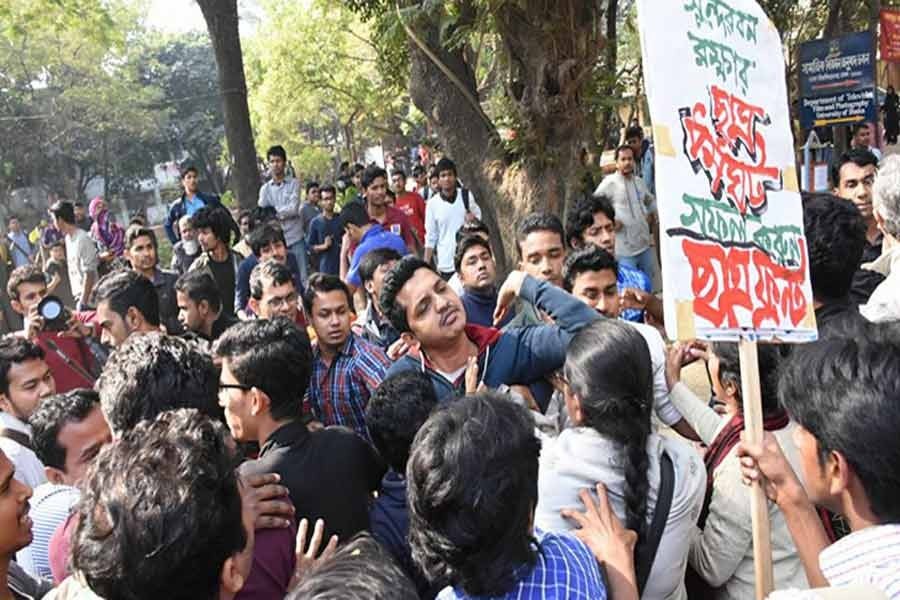The residents of the capital have long reached their tethers' end watching the cat-and-mouse between the law enforcers and the footpath encroaching small traders. On occasions, the face-off turns violent, with the police evicting the hawkers without mercy. The illegal traders hit back in groups. Many move stealthily keeping a low profile for a few days. They, in fact, bide time in search of an opportunity to open their trade.
The footpath users would be seen heave a sigh of relief, because now they can walk on the road without hindrances. For nearly a decade, the strip of road between the Golap Shah Mazar and the roundabout near the former Gulistan building has been a spot used to watching regular pitched battles. Those were fought between the implacable, and at times ferocious, hawkers and the law enforcers.
The police in battle gear would be seen often intervening in violent confrontation between hawkers and the city corporation forces. The latter would be routinely overpowered by the aggressive footpath vendors. In the case of police achieving success, the previously occupied venues would get back their normal look.
In the recent years, the said portion of the road virtually became a sprawling open-air market. The space was off-limits to all types of vehicles. A common feature of the hawker-police battles was the vendors would go into temporary hiding in the nearby places. After the police presence starts thinning out, they begin coming back. The scenario is business-as-usual until the police swoop on them once again after an interval.
Apart from that in the Gulistan area, Dhaka has several such stiflingly crowded spots of roadside trading. Farmgate, Mouchak, Mirpur and places on the northern bank of the Buriganga have earned a lot of notoriety for regularly hosting these illegal marketplaces. The sufferings of pedestrians in these crowded areas know no bounds. Protests sponsored by the locals have failed miserably. For, footpath encroachers and illegal occupants of public lands finally prove too powerful to deal with firmly. That they operate under the patronage of one or another syndicate is an open secret. Exceptional cases, however, are there.
The eviction drive conducted by around 300 students of Jagannath University (JnU) on September 17 against illegally set up shops, improvised eateries and stands of human haulers beside a campus boundary wall will perhaps stand out as an instance of successful resistance to these syndicates in the first attempt. The students of the university in old Dhaka had repeatedly made appeals to the 'owners' of these businesses to remove their activity from the area. A most atrocious aspect of the episode was the students could not use the southern gate of the university due to the dug-in presence of the unauthorised trading shanties and stands of rundown vehicles.
In Dhaka these days, many working class groups like bus drivers and footpath hawkers view students as their 'enemies'. Even in a petty quarrel, the former do not hesitate to make a collective assault on students if they happen to be without companions. This is an ominous sign. However, the force of students far outweighs that of the roguish elements. The Jagannath University students have amply proved this.
The students have apparently resorted to their final step after their entreaties fell on deaf ears. Signs of withdrawing peacefully from the area surfaced only after the successful eviction drive. The erring traders must have realised the illegal nature of their activities. They have agreed to shift to another place, enabling the students to use the space in accordance with their convenience. This peaceful solution to the JnU's festering problem could be replicated elsewhere in the capital. But mustering honest courage and moral strength, like that of the students, on the part of the public ought to be ensured first.


